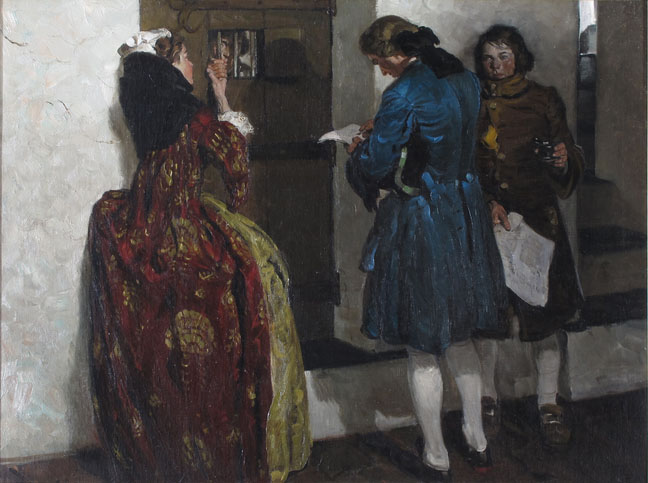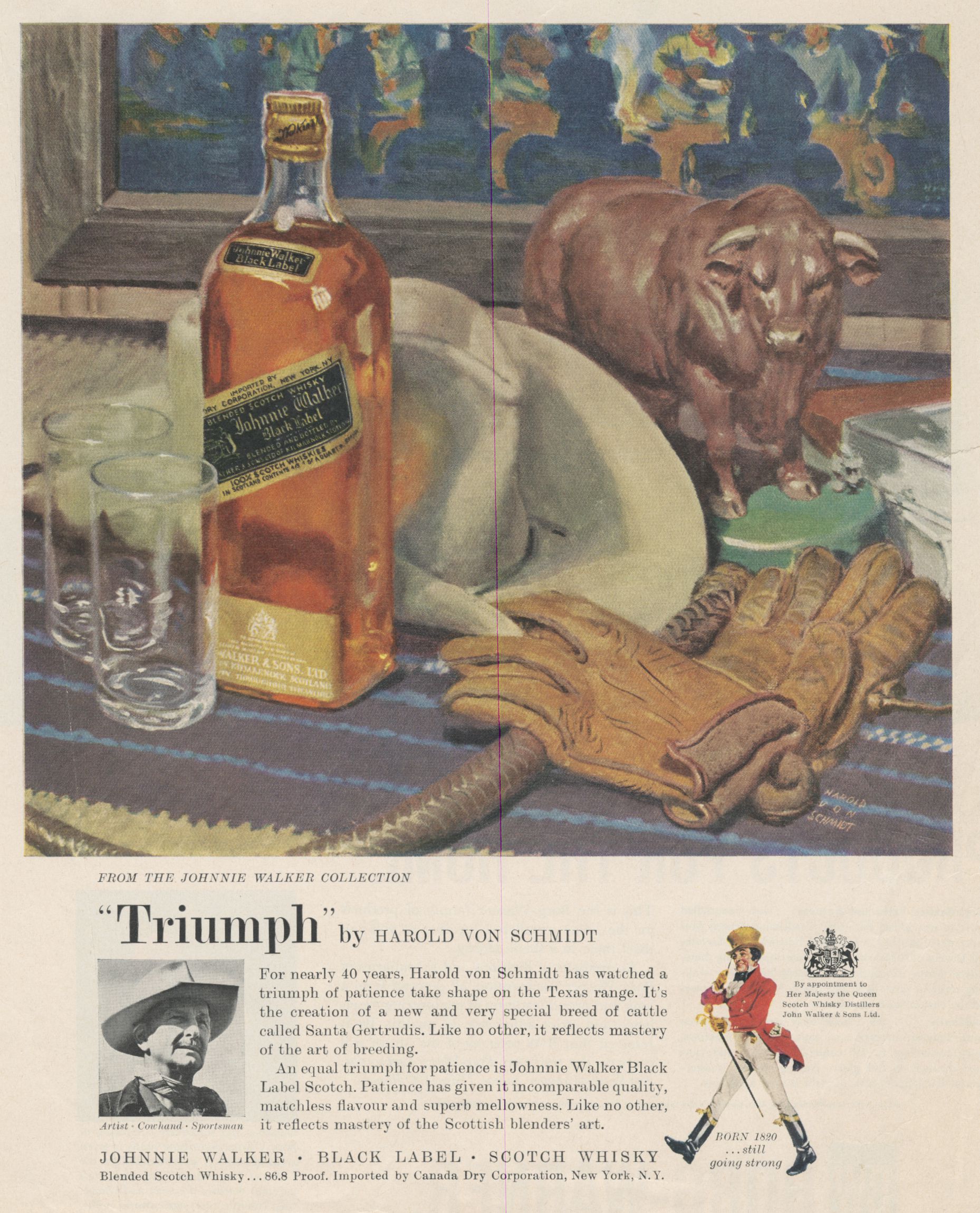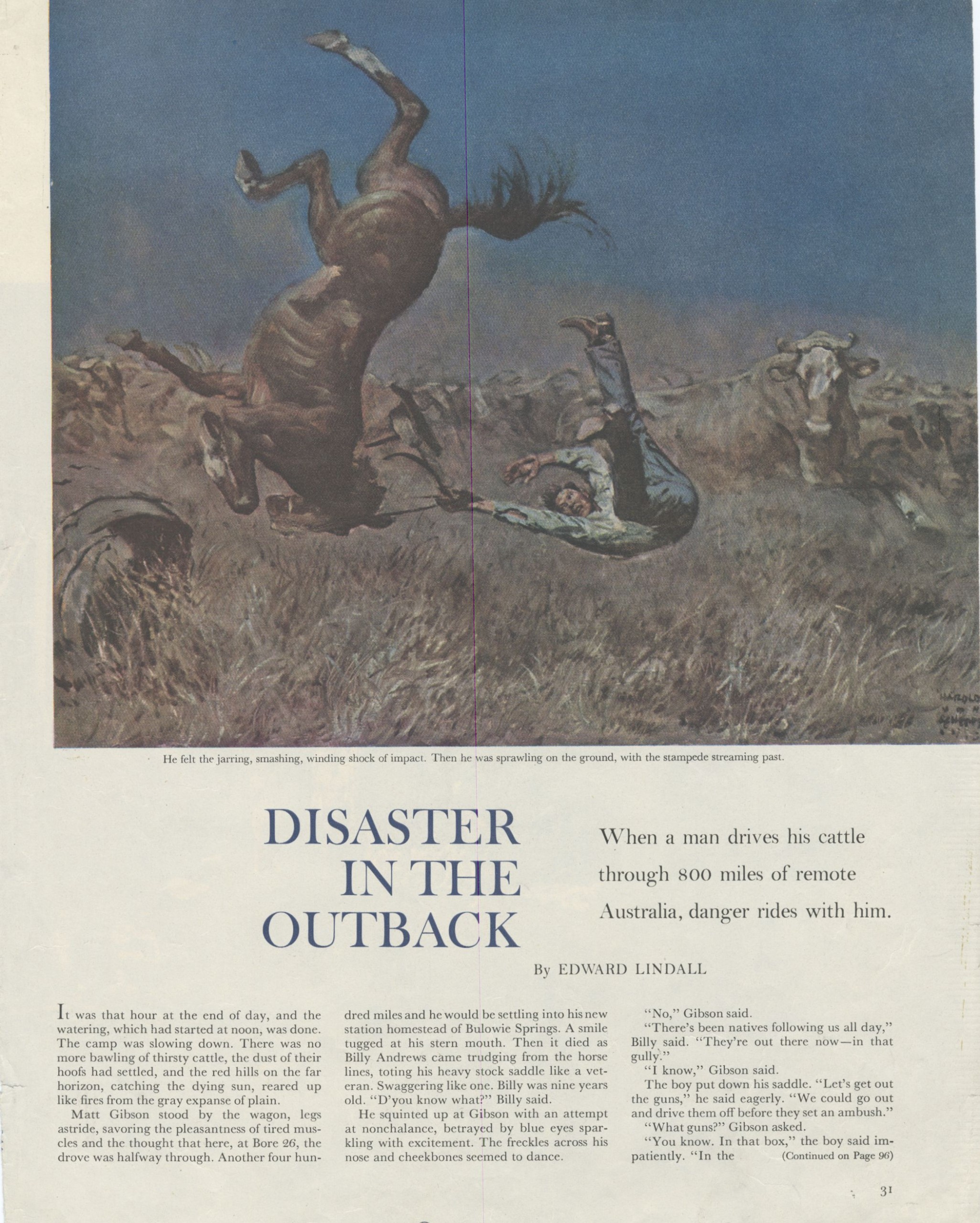Collections Hunters:
Uncovering the Museum’s Art and Archival Collections
Harold Von Schmidt: Pictorial Structure through Research
June 23, 2020 – Written By: Barbara Rundback
This week’s subject allowed me to delve deeper into a recent acquisition by Harold von Schmidt, a student of the accomplished illustrator Harvey Dunn. Curious about the imprisoned man in “I have had the liberty of speaking through the hold of door to my wife and servants, his editorial read,” I performed a web search for the December 1934 issue of The Elks Magazine, to find out more. Luckily, the magazine was digitized.
Reproduced as a black and white two-page spread, this picture accompanied author Charles Spencer Hart’s historical account of the trial of John Peter Zenger, editor of the New York Weekly Journal. In 1734, the newspaper’s harsh reports on the rigging of elections by corrupt leaders resulted in Royal New York Governor William S. Cosby issuing a warrant for Zenger’s arrest. The charge—“seditious person and a frequent printer and publisher of false news and seditious libels.”
The court set an excessive bail; therefore, Zenger was incarcerated for nine months while awaiting trial. During this time, Zenger’s wife Anna continued to publish his letters in the periodical. Prominent Philadelphia lawyer Andrew Hamilton came to Zenger’s defense and asked the prosecutors to prove that the printed statements were false. The prosecution failed, and John Peter Zenger was acquitted. This trial set the foundation for the First Amendment Right regarding freedom of the press.
Harold von Schmidt illustrated the moment when Anna and their servants could finally visit Zenger at the jail. Here, Zenger relays his editorial letter to his wife, which explained why the New York Weekly Journal missed a week of publication. Von Schmidt believed in conducting extensive research to ensure his renderings were factually correct. His personal library of clippings files, books, and magazines included the volumes of Album of American History and Pageant of America for historical reference. Von Schmidt stated, “Often the best parts of my illustration are by-products of research…I end with an understanding and an awareness which enables me to unify subject and picture structure.”
This additional information gives Harold von Schmidt’s artwork context. For a curator or educator, this painting would be an excellent selection for exhibitions and curriculum related to civil rights, freedom of speech, and American history.
To find out more about Harold Von Schmidt, visit his profile on the Museum’s Illustration History website (IllustrationHistory.org).
Harold Von Schmidt: Illustrator of the Old West
Written By: Venus Van Ness
Harold Von Schmidt was best known for his illustrations of Western magazine stories and was particularly known for his action scenes depicting historic events. He achieved great success despite a difficult start to his life and inauspicious beginnings. Tragically, both of his parents died in an accident when he was five, and he and his brothers were sent to live at an orphanage.
After a time, the brothers lived with their elderly grandfather, Colonel Alexis Von Schmidt, who had come to California in a wagon train, been a Forty-Niner, and would often share stories of the Old West with Von Schmidt. Colonel Von Schmidt recognized his grandson’s talent and encouraged him to draw. Sadly, the Colonel passed away when Von Schmidt was thirteen. He and his brothers were relocated again, to reside with an aunt and uncle.
Von Schmidt was very active and athletic, and spent his late teens and early twenties working as a lumberjack and cowboy. He learned about cattle and horses through working long trail drives. His athleticism led him to be selected for both the 1920 and 1924 U.S. Olympic Rugby Teams, although injury kept him from participating at the 1924 games.
Von Schmidt pursued another avenue and moved to New York City to study with renowned artist Harvey Dunn at the Grand Central Art School. From this point forward, he exceled, and he became commercially successful with his work, which frequently appeared in the Saturday Evening Post, Colliers, American, and other magazines. He established his realistic, Western style with clear obvious influences from the teachings of Dunn.
Today, twelve of Von Schmidt’s paintings depicting the Gold Rush of 1849 and other Western themes hang in the Governor’s office in Sacramento, California, and five of his Civil War paintings are in the permanent collection of the United States Military Academy at West Point.







